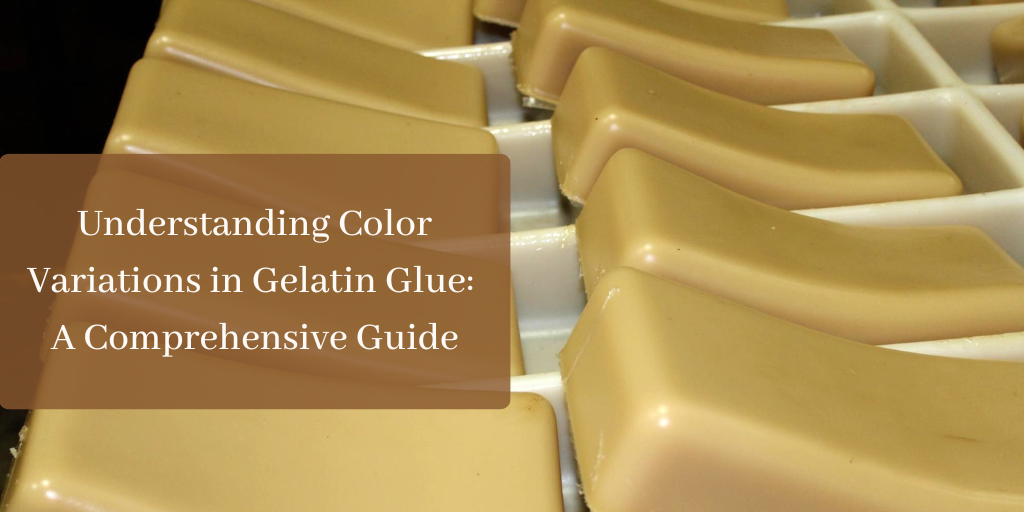Have you ever noticed that your gelatin glue can vary in color from one batch to the next? If so, you're not alone. Color variations in gelatin glue are common and perfectly normal. Let's explore why this happens and how it affects your adhesive needs.
The Basics of Gelatin Glue
Gelatin glue, also known as protein glue, is a natural adhesive made primarily from animal collagen. It's widely used in various industries, including bookbinding, woodworking, and packaging. One of the key attributes of gelatin glue is its strong bonding capability, making it an excellent choice for many applications.
Key Factors Influencing Glue Color Variations
1. Type of Netting and Manufacturer
The type of netting and the manufacturer play a significant role in the color variations of gelatin glue. We derive our gelatin from recycled pharmaceutical soft gel netting or hard capsules, and different manufacturers have unique processes and materials. This can lead to distinct variations in the netting used, which, in turn, affects the final color of the glue.
For instance, one manufacturer's netting might produce a lighter shade, while another's might result in a darker hue. These differences are inherent to the manufacturing process and contribute to the natural variability of the product.
2. Protein Used in the Glue
Another critical factor in color is the type of animal protein used in the glue. Gelatin glue contains animal proteins like bovine or porcine collagen, which have varying natural colors. Because of this, the color of the glue can vary not only from one company to another but also within the same lot or product.
The processing methods used to extract and refine the glue can also lead to color differences. For example, technical-grade gelatin, which is commonly used in adhesive manufacturing, can range from a light straw hue to a darker amber shade. This variation is influenced by how the gelatin was processed before reaching the manufacturing facility.
3. Corn Syrup Additive
Corn syrup is often added to gelatin glue to improve its adhesive properties. However, it can also contribute to color variations. Depending on the type and amount of corn syrup used, the final color of the glue can shift slightly. This is another natural aspect of the manufacturing process that can lead to differences in appearance.
Why Color Variations Are Normal
Slight color variations in gelatin glue are perfectly normal and nothing to be concerned about. These variations stem from the use of natural raw materials, which inherently possess different colors. The final color of the glue is influenced by the combination of these materials and the specific processes used in manufacturing. Here, you can see some of our most popular gelatin glue types and the present color variation.
As pictured, pharmaceutical-grade gelatin tends to be lighter in color due to its purer processing methods. Glues made with this gelatin type will exhibit a lighter color than those made with technical-grade gelatin. Despite these differences in appearance, the performance of the glue remains consistent.
Quality Control and Performance Assurance
At LD Davis, all our glue products undergo a rigorous 16-step quality control testing process to ensure optimal performance before they leave our manufacturing facility. This meticulous testing guarantees that our glues consistently meet high standards regardless of slight color variations.
Our commitment to quality means that you can trust our gelatin glue to perform reliably, whether it's a light straw hue or a darker amber shade. The color difference does not affect the adhesive properties, ensuring that your projects are always completed with the highest quality glue.
Eco-Friendly and Sustainable Manufacturing
All LD Davis gelatin glues are eco-friendly, non-toxic, biodegradable, and recyclable, aligning with our commitment to sustainable manufacturing practices. We derive our gelatin from leftover pharmaceutical soft gel netting or hard capsules and pride in producing adhesives that are not only effective but also environmentally responsible.
Still Curious About Gelatin Glue Color Variations?
Next time you notice a slight difference in the color of your gelatin glue, rest assured that it likely is a natural occurrence and doesn't impact its quality or performance. Understanding the factors contributing to these variations can help you appreciate gelatin glue's natural and sustainable nature.
Whether you're using our glue for bookbinding, woodworking, or packaging, you can trust that LD Davis provides the highest quality products, meticulously tested and manufactured with care. Embrace the natural beauty of color variations in gelatin glue, knowing that they reflect the authenticity and quality of our adhesives. If you have questions about your adhesive, let us know.







